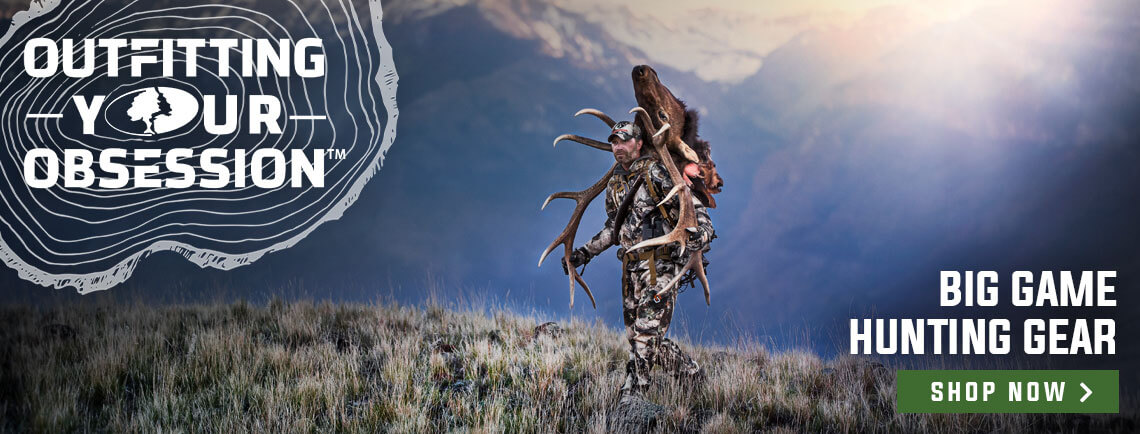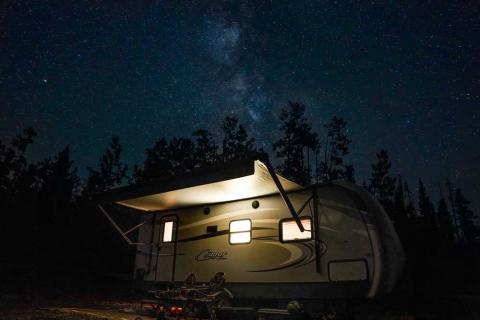Provided by John E. Phillips
In the turkey-hunting fraternity, one of the toughest turkeys to take in the Continental U.S. is the Osceola gobbler. Actually hunting the Osceola isn’t any different from hunting any other turkey; however, the area where he lives in Florida is very small. Although, there’s some public hunting for the Osceola, it’s fairly well restricted. The same is true about the Roosevelt elk and even more so the Tule elk. California is the only state that has both the Roosevelt and the Tule, as well as the Rocky Mountain elk. We wanted to take a closer look at these far western elk, and what’s required to take them. So, we talked to Parrey Cremeans, a hunting guide from northern California, who has been hunting and guiding in the far west since 1988. His guiding service is called Just For Hunting. He’s taken 12 elk, and he’s called in many more for his clients.
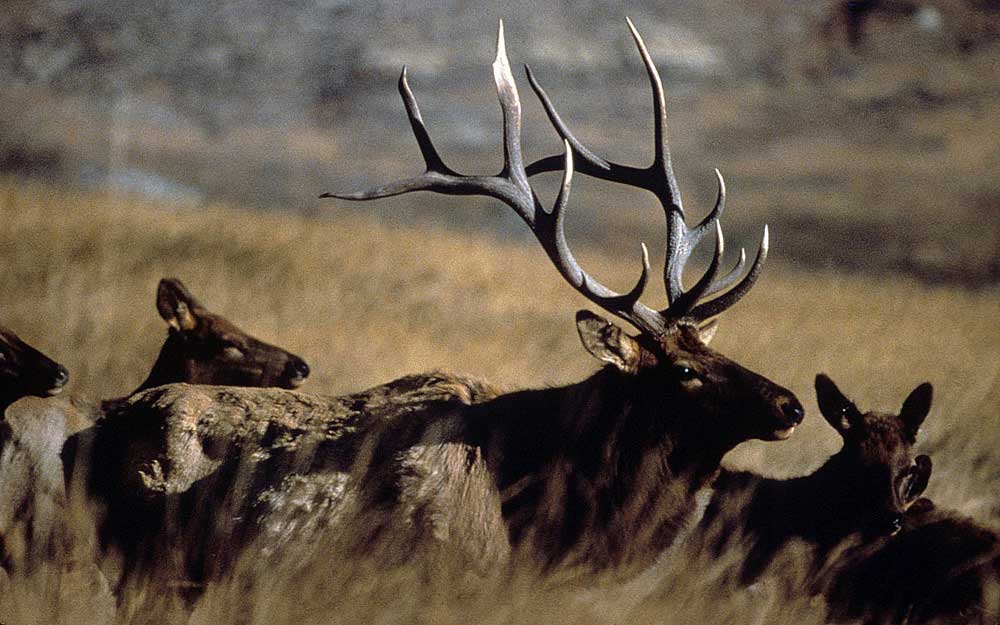
Roosevelt Elk: One of the Most Difficult Subspecies of Elk to Hunt
California is the only state that has all three subspecies of elk required for the North American 29. But the California species have a limited draw. You can’t buy an over-the-counter tag to hunt any elk in California. However, the zone that has the largest number of tags available in California is the Roosevelt zone, although there’s only 35 tags that can be drawn to hunt the Roosevelt elk. The states of both Oregon and Washington have herds of Roosevelts. I hunt Roosevelts primarily in Oregon because the state has over-the-counter tags for archery elk on the western side of Oregon and over-the-counter tags for Oregon residents who want to hunt them as well.
I’m often asked, “What’s different about hunting Roosevelt elk?” I love to hunt the Roosevelt elk during the rut because I like the show they put on for hunters. Roosevelts tend to be much more aggressive than Rocky Mountain elk or Tule elk. At the peak of the rut, if you can call very well, you can just about bet on seeing a Roosevelt coming to your call and wanting to fight. I believe the Roosevelt elk live in the roughest terrain of any of the elk species. The country they live in is pretty much straight up and down, and they like to get down in the deep timber in the drainages where they live. You can have an encounter with a Roosevelt elk where the bull comes within 10 yards of you, and you still may not be able to get a good bow shot. The way I hunt them is to, first of all, find a bull that will respond to calling. Then I try to get myself or my hunter in the right place to take that bull when he comes in to us. Most of the time, we can get the elk to within 20 yards of the shooter. Because the country Roosevelts live in is so thick, you just about have to get the Roosevelt elk in that close for an archer to have a chance to take one.
The Roosevelt elk looks somewhat different from the Rocky Mountain elk - darker in color and with slightly smaller antlers and larger bodies than the Rocky Mountain elk. A mature Roosevelt weighs between 1,000 to 1,100 pounds. However, you can use the same calls for a Roosevelt that you do to call in a Rocky Mountain elk or a Tule elk. I’ve found that all three of these elk species make just about the same vocalizations.
The Toughest Roosevelt Elk Hunt
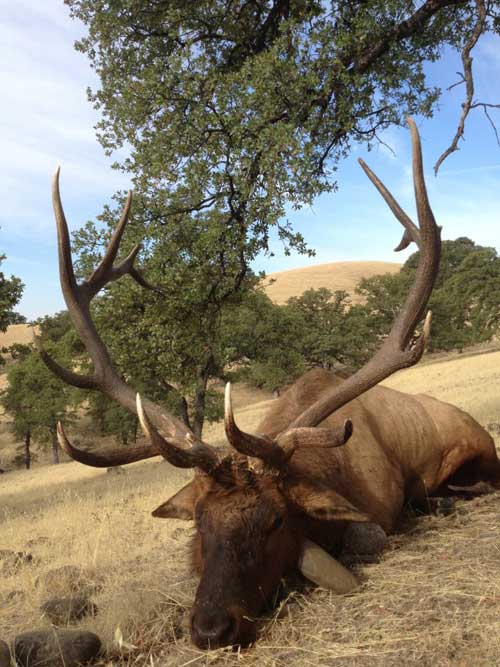
Our elk in Northern California range from the Cascade Mountains west to the Coastal Mountains. Sometimes when you’re hunting these elk, you’ll see them laying down on a sandy beach with the ocean behind them. But the toughest hunt I’ve been on was when I guided my friend Jason from Oregon. We were hunting in clear-cuts where regrowth timber was planted after a clear-cut. These areas were really thick and steep. Although we were following a herd of elk that was walking away from us, they would respond some to our calling. After a while, we finally got one bull to turn around and come to us. I was calling 60-80 yards behind Jason, who would be the shooter.
One of the reasons I like to get that far behind my shooter is because when a Roosevelt elk comes in during the rut, he’s coming in to fight. So, the first thing he normally will do is to circle downwind of where the call’s coming from to make sure that the bull he hears calling him isn’t a bull that’s already beaten him up in a fight. So, by placing my shooter 60-80 yards in front of me, the shooter should see the elk and get a shot before the Roosevelt circles downwind of the caller. Roosevelt elk usually make a lot of noise coming in, and if a bull sees you, you still may have a small chance of getting a shot. But if the elk smells you, he’s gone, and the hunt is over.
This bull was so mad that he came in charging. Jason took the shot with his bow at 17 yards. His arrow flew true and hit the elk right behind the shoulder. After the shot and all the high fives and congratulations were over, we waited about 45 minutes before we started the blood trail to follow this elk. We were pretty confident that the elk didn’t go very far, and that Jason had made a good, lethal hit on that bull. We found the elk at about 3 p.m. The bull was a big 5X5.
Since much of the Roosevelt elk’s habitat is full of very tall trees providing shade, we were able to butcher the elk, break him down and carry two daypacks of meat back to the truck before dark. The pack I use is from a brand called Stone Glacier. I like this pack because it has a really big main compartment that’s not shelved, which allows you to put a lot of meat in that compartment. Then it opens up and has a shelf behind the main pack where you can tie on more meat. However, we still couldn’t fit all that meat in our packs in one trip, so we took what we could and tied up the rest of the meat in trees to keep predators from getting to it.
The next morning, we got up early, took our empty frame packs, made two trips that day and then made two more trips the next day to get all the meat out. So, after the bull was shot required two more days for us to finally get all the meat back to the truck. Our truck was only parked 3/4-mile or so from where this bull was taken. However, the mountains we had to climb were straight up and straight down. Even if you’re in very good shape for a Roosevelt elk hunt, when you have to pack out that much weight and go straight up and straight down mountains, you’ll be worn out when you get back to the truck with each load. Every trip we had to pull ourselves up through the brush carrying 80-100 pounds of boned-out meat. The quarters on that elk weighed about 135 pounds each. A Rocky Mountain elk quarter usually will weigh 85-100 pounds for a bull scoring about 275-282 on Boone & Crockett (B&C).
Finding a Bull Roosevelt Elk Doesn’t Mean Taking a Roosevelt Elk
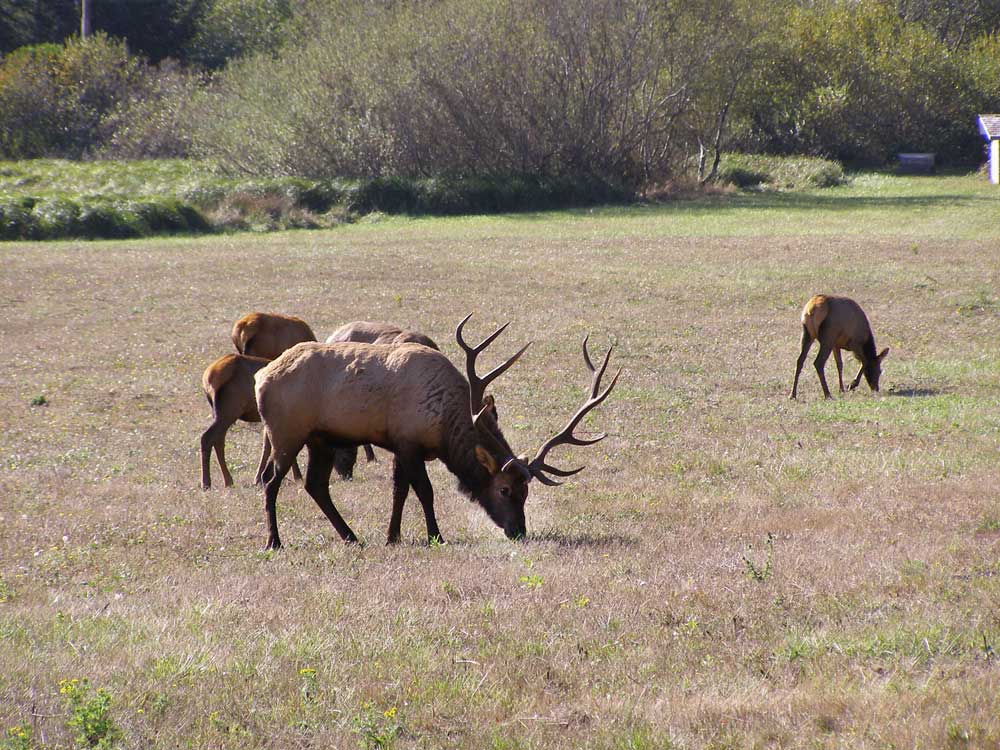
My friend and I were hiking into an area where we previously had found a spike bull elk. We decided there had to be some other elk there. But the elk weren’t very vocal that morning, so we started hiking in the direction we thought the elk might have gone. We came to a creek, crossed the creek and popped out on top of the ridge just above the creek. We spotted a bull laying in a wallow not 20 yards in front of us. We looked like a deer in headlights when we saw that bull so close to us. Once the bull looked up and spotted us, he looked like an elk in headlights. That bull spooked, and the two other bulls with him spooked. They jumped and ran up a hill, stopping about 40 yards from us.
As soon as we saw the bulls stop, we both pulled our bows back to full draw, but we held our shots - both hoping the other would call out the range we were from the elk. When you’re hunting with a partner or with a guide, and you spot an elk that’s within bow range, you usually expect your partner to call out the range you are from the bull to pick out the sight pin you want to use for aiming. Well, each of us thought the other was going to call out the range because we both had tags. We’d learned that when you had a shot at 40 yards in Roosevelt elk country, you’d have at the most 1 to 2 seconds to get the shot off before the elk would leave the county. Those bulls didn’t stand in that opening in front of us but for an instant, and our hesitation caused neither one of us to get a shot.
When you’re hunting Roosevelt elk in thick cover, that type of encounter occurs much more often than having a chance to actually release an arrow. That’s the thing you have to prepare for when you decide to hunt for Roosevelts. You may see, hear or get close enough to a bull to take a shot, but because the terrain is so steep, and the cover is so thick, you may have a great hunt seeing and hearing several bulls but never find them in a place where you can take them. Or, you only may see them for a second or two before you can draw your bow and shoot.
What’s the Biggest Elk Cremeans Has Ever Taken?
I took my biggest elk ever in my home state of California on a special state Roosevelt elk tag - it scored 307 inches. In California, a landowner may not be able to draw a Roosevelt elk tag, even if he has elk coming on to his property all during the season. The state offers what’s called share tags, and if you draw one of those, you can hunt that landowner’s property. Harvesting a Roosevelt elk isn’t too hard, if you’re lucky enough to draw one of these landowner tags. On this particular hunt, we were hunting a pasture on a landowner’s property. Although I had to search a few days to find a good bull I wanted to take, I finally downed a 7x6 bull that scored 307 inches for his rack, which was a big rack for a Roosevelt elk. To go in the Boone and Crockett (B&C) record book, a Roosevelt elk had to score 292.
We didn’t do a lot of calling on this hunt because we were hunting during the early season the third week in August. Since the bulls were still together, we set up in the evenings or in the early mornings. We would sneak out in the back pasture each day of the hunt and see what size bulls might be available for me to take. We did try some calling to draw in bigger bulls that were just off the property line to come onto the land we had to hunt. But they never came over to our lands. However, I was really proud to be able to take the best bull we saw in three days of hunting with my bow.
What Are the Characteristics of Rocky Mountain Elk?
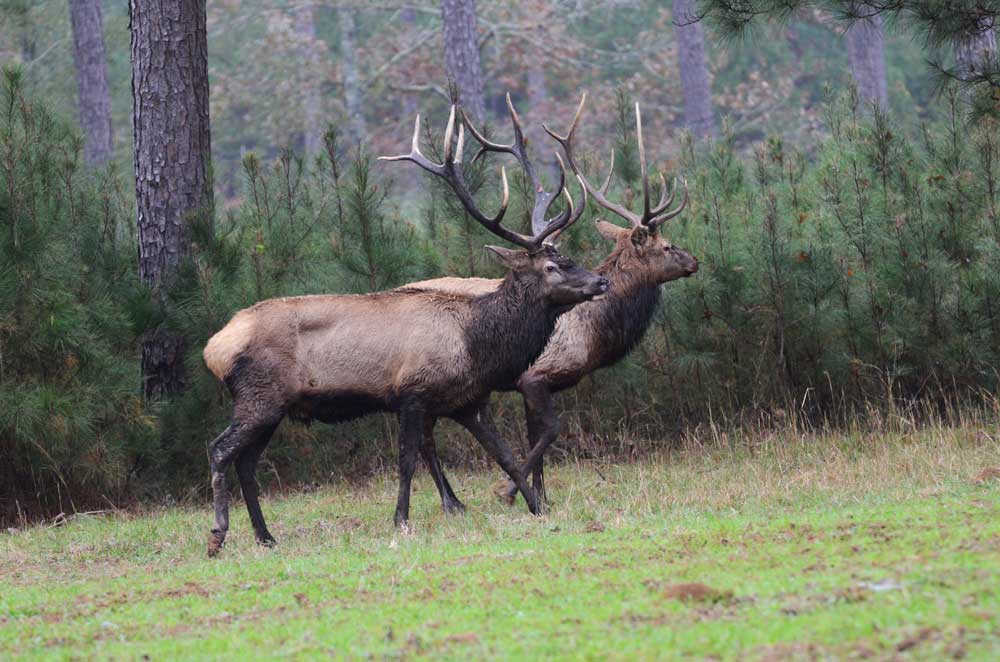
To the east of where I live in Redding, California, there’s an isolated herd of Rocky Mountain elk that have been in the area since 1914. They were brought there by rail car from Gardiner, Montana. Originally, they were released around a town called Winthrop, California, but in 1940, when Shasta Lake was built, that town vanished under the water. Those elk there moved into the mountains as the lake was flooded. There were about 30 to 35 elk released in this area, but the first time the region had a legal elk-hunting season for this herd of elk wasn’t until 2011. I started hunting them in 2011 on a private-land program. This herd probably only has about 300-400 animals in it, and they stay in about a 35-square mile radius. They mostly live on private-land ranches and move from ranch to ranch.
We usually hunt those elk on private-land management tags or landowner tags, if we draw them. If we have a hunter who draws one and wants us to guide him on this herd of elk, the hunter typically has a good chance of taking a Rocky Mountain bull that will score from about 330 inches to about 365 inches, which is a really nice bull. On a 5- to 7-day guided hunt, a hunter will pay from $5,500 up to about $7,000. The good news about drawing landowner and private- land management tags on the ranches where we hunt is that these elk don’t get much hunting pressure. They’re also very susceptible to calling.
Once, I guided a fellow who drew one of these tags on a ranch we hunt. He was 72 and in really good shape. He told me he wanted to take a bull that would score about 350. On the first morning we went out as we were driving to the place where I wanted to start hunting, we saw a bull down below us. But he was an immature bull, so we didn’t go after him. As we continued to drive up the mountain, we spotted another bull that looked pretty good. We circled around him to get the wind in our favor, and I set my hunter up out in front of me. When he was set, and I was set, I bugled. That bull fired out a bugle right behind my bugle. We’d only been hunting for 35 minutes when suddenly my hunter was looking at two bull elk immediately in front of him. Both bulls were nice, but since he had told me he’d like to take a bull that would score about 350, and I didn’t think either one of them would make that 350-inch mark, we passed on those bulls too.
We hunted for three days after that first morning, and I called in nine bulls. Then we got on a herd that had four bulls in it and managed to get in-between them. We attempted to call a bull earlier that morning close to the herd, but he wouldn’t come. However, when he heard all the bugling going on as we were calling to these four other bulls, the early-morning bull decided he needed to come and get right in the middle of whatever was happening. This bull started moving straight down the mountain, and my hunter made a great shot with his rifle. The bull only went 35 yards before he went down. Since we were on a ranch, I was able to pull up right beside the downed bull with an ATV. Since we had three guys to quarter the bull, we were able to get the bull broken down and quartered and in a cooler in about 2.5 hours. That bull scored 342.
Why Tule Are the Toughest Elk of All
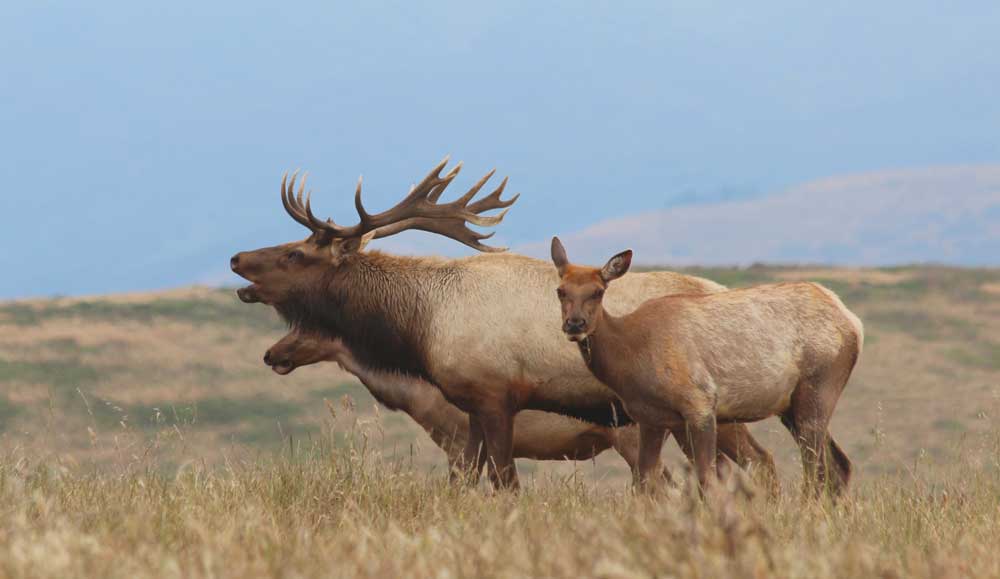
The tag for the Tule elk is one of the most-sought-after tags in the West. The demand is very high, but the number of tags given out is extremely small. In fact, most of the hunters who want to hunt Tule elk with us purchase a private land-management tag that usually costs from $25,000 to $35,000 if you can get one. But your odds for harvesting a Tule elk are much greater with one of these tags than if you go into the open drawing. Most of the hunters who buy those tags are trying to fill out their bucket list of taking the North American 29.
The North American 29 is a list of the 29 game species most prized by hunters on the North American Continent, including all the species of sheep, deer, elk, musk ox, polar bear and other hard-to-get big game species. As you know, drawing tags for some of these species in the North American 29 are becoming harder and harder to get. The minimum number of points that you have to have to draw a Tule elk tag is 19, though many of the hunters who put in for tags and have met the required 19 points still may not ever draw a tag to hunt this elk. That’s the reason that buying a landowner tag, regardless of the price, is in such high demand.
For a Tule elk, there’s probably no more than 18 to 20 tags given out to hunt this elk. There’s also a shared tag that allows a hunter to go in the lottery for specific lands to take a Tule elk – probably a total of 17- 20 tags. So, there’s probably only about 50 Tule elk tags given out to hunt each year. Including the private land-management tags, there’s probably no more than 75 total Tule elk tags that can be drawn or bought each year. A large number of big-game hunters need that Tule elk tag to complete the big 29. But only about 5,700 Tule elk live in the entire state.
The four different ways to get a Tule elk tag in California include: (1) the general draw; (2) a shared tag (which is a raffle); (3) a landowner tag; and (4) a private land-management tag. The landowner tags aren’t too difficult to get if you can find a landowner who’s working with the state to improve habitat for Tule elk on his property. However, as I’ve mentioned earlier, the price of that tag is very expensive. The landowner tag is the only tag that a person can transfer ownership of to take an elk. For instance, if a landowner draws a tag, and he’s in the program to help improve the habitat for the Tule elk, he can sell that tag. If you draw a landowner tag, you can’t apply for that tag again until the third year after you’ve drawn your first Tule elk tag.
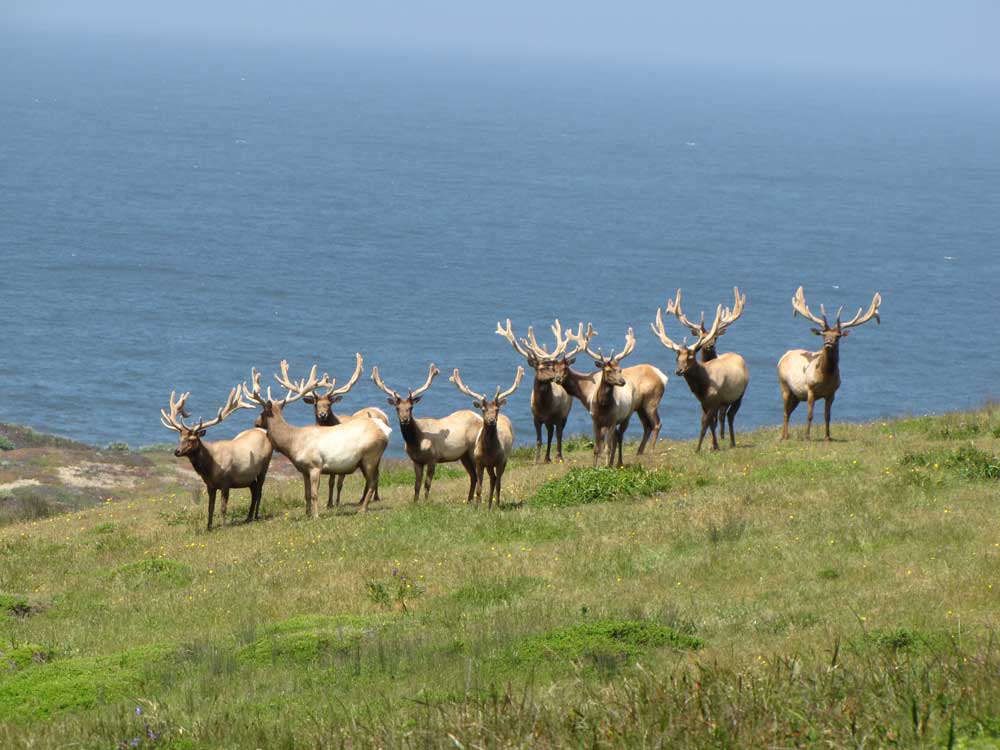
The private land-management tag is a program in which the landowner puts his property in the state program, and the state dictates the improvements he needs to make to his land to increase wildlife habitat, depending on the size of the property, the population of the species on that property and the amount of habitat improvement the landowner makes. Just for Hunting already has a client who’s hunting Tule elk in 2022 that I’ll guide.
The Tule is the smallest elk. A big Tule will weigh about 700 pounds, while an average Tule bull will weigh around 600 pounds. The Tule’s antler characteristics are similar to the Roosevelt’s antlers. They generally have numbers of abnormal points and have more of a crowning on the ends of their antlers. To go in the Boone and Crocket record book, a Tule must score 292 inches.
No other states have elk that qualify as Tule elk. As far as I know, California has the only herd of Tule elk in the U.S. The Tule live more in the central part of the state of California than either the Roosevelt or the Rocky Mountain elk. They usually like open oak savannahs, marshlands and open grasslands. There’s a population of Tule in the high desert close to Mount Whitney in east-central California. One of the most popular areas to hunt these Tule elk is the Grizzly Island Area, which is a state-run 12,900-acre wildlife area. Some spike-only tags dictate which Tule elk you can shoot on Grizzly Island. The hunters who draw that tag usually have wildlife biologists hunting with them to make sure the hunter takes the right elk for the tag he’s drawn. These biologists generally monitor these elk all year long. If you draw that tag to hunt Grizzly Island, the tag will only cost about $486 for a resident. For an out-of-state hunter, that tag will be about twice as much as the resident tag. Of all three species of elk that we have in California, the Tule elk lives in probably the easiest country to hunt.
If you’re interested in hunting in California, here’s a link to learn more. Or, to learn more about hunting elk specifically, you can find more information here. If you’re interested in hunting any one of these three elk subspecies, you need to book a hunt about two years in advance or even earlier than that. Here’s a map of California’s Elk Hunt Zones.
To get in touch with Parrey Cremeans, go to the Just For Hunting website at www.justforhunting.com, and click on Parrey’s icon. You can contact him at hunter@justforhunting.com or call him at 650-888-0808. Besides elk, Cremeans also guides for black-tailed deer, mule deer, antelope, turkeys (Rio Grande and Merriam gobblers), bear, black bears and hogs.

